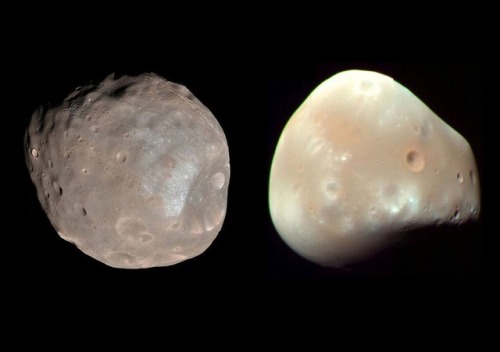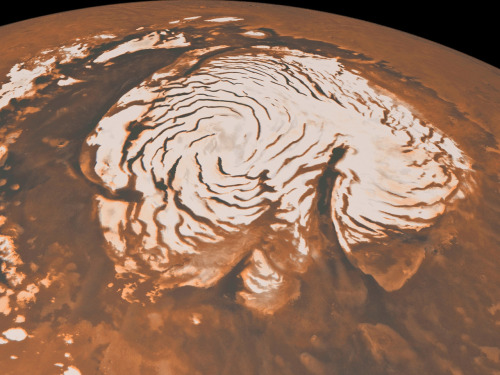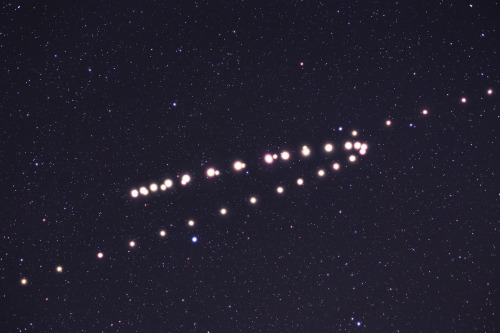Edify Yourself 👽
Edify yourself 👽










Weird Animal Facts (see 15 more)
More Posts from Duxgregis and Others
This is why you should always speak your mind

I knew my remark would be unpopular and met with nasty comments, misguided statements about Game of Thrones and the film industry, insinuations that there aren’t any good women or nonwhite directions, couple of lewd comments about my sex life. There is truth to the adage: Facebook is a cesspool.
What I didn’t know is that I would get enough attention to make the top comment.
At the time of writing, sixty hours after initial posting, it’s running a little less than 80% laugh reactions—so, people thinking I’m a moron—and it’s running about 1,100 reactions and 324 replies.
Unfortunately for my would-be adversaries, I don’t debate on Facebook and it is a favorite pastime to read the vitriol and mediocre hash slung in my direction as if it’ll have any effect on my self-esteem. Fortunately, you don’t have to do the same. I present: the major response patterns and why they don’t hold any water.

“TRUST NO ONE”
You can buy it HERE.
I’m so mad that a t4 bacteriophage actually looks like that and that it’s appearance isn’t made up
It’s so beautiful. It’s so beautiful it makes me want to cry. It’s the fulfillment of dozens, hundreds, thousands of people’s efforts, but it’s also the fulfillment of an idea suddenly becoming real.
Peter Saulson of Syracuse University, who has spent more than three decades working on the detection of gravitational waves.
Astronomers Strike Gravitational Gold In Colliding Neutron Stars
(via npr)
Au in some stars many, many, many AUs away.
Matilda's got all the shades to grey to throw at you






apparently e.l. james called former child star mara wilson (matilda) a “sad fuck” for critiquing the 50shades books a while ago and now there’s a feud. i love it.

Disk-cuss. http://ift.tt/1iBNaVf
Mars is the third solar body inhabited by humans. (cir. 2029)
Ten interesting facts about Mars
The ancient Sumerians believed that Mars was Nergal, the god of war and plague. During Sumerian times, Nergal was a minor deity of little significance, but, during later times, his main cult center was the city of Nineveh. In Mesopotamian texts, Mars is referred to as the “star of judgement of the fate of the dead”. The existence of Mars as a wandering object in the night sky was recorded by the ancient Egyptian astronomers and, by 1534 BCE, they were familiar with the retrograde motion of the planet. By the period of the Neo-Babylonian Empire, the Babylonian astronomers were making regular records of the positions of the planets and systematic observations of their behavior. For Mars, they knew that the planet made 37 synodic periods, or 42 circuits of the zodiac, every 79 years. They invented arithmetic methods for making minor corrections to the predicted positions of the planets.

Mars is the fourth planet from the Sun and the second-smallest planet in the Solar System after Mercury.

The bright rust color Mars is known for is due to iron-rich minerals in its regolith — the loose dust and rock covering its surface. The soil of Earth is a kind of regolith, albeit one loaded with organic content. According to NASA, the iron minerals oxidize, or rust, causing the soil to look red.

The rotational period and seasonal cycles of Mars are likewise similar to those of Earth, as is the tilt that produces the seasons. Mars is the site of Olympus Mons, the largest volcano and second-highest known mountain in the Solar System, and of Valles Marineris, one of the largest canyons in the Solar System.

Mars has two moons, Phobos and Deimos, which are small and irregularly shaped. These may be captured asteroids, similar to 5261 Eureka, a Mars trojan.

There are ongoing investigations assessing the past habitability potential of Mars, as well as the possibility of extant life. Future astrobiology missions are planned, including the Mars 2020 and ExoMars rovers. Liquid water cannot exist on the surface of Mars due to low atmospheric pressure, which is less than 1% of the Earth’s, except at the lowest elevations for short periods. The two polar ice caps appear to be made largely of water. The volume of water ice in the south polar ice cap, if melted, would be sufficient to cover the entire planetary surface to a depth of 11 meters (36 ft). In November 2016, NASA reported finding a large amount of underground ice in the Utopia Planitia region of Mars. The volume of water detected has been estimated to be equivalent to the volume of water in Lake Superior.

Mars can easily be seen from Earth with the naked eye, as can its reddish coloring. Its apparent magnitude reaches −2.91, which is surpassed only by Jupiter, Venus, the Moon, and the Sun. Optical ground-based telescopes are typically limited to resolving features about 300 kilometers (190 mi) across when Earth and Mars are closest because of Earth’s atmosphere.

Like Earth, Mars has differentiated into a dense metallic core overlaid by less dense materials. Current models of its interior imply a core with a radius of about 1,794 ± 65 kilometers (1,115 ± 40 mi), consisting primarily of iron and nickel with about 16–17% sulfur. This iron(II) sulfide core is thought to be twice as rich in lighter elements as Earth’s. The core is surrounded by a silicate mantle that formed many of the tectonic and volcanic features on the planet, but it appears to be dormant. Besides silicon and oxygen, the most abundant elements in the Martian crust are iron, magnesium, aluminum, calcium, and potassium. The average thickness of the planet’s crust is about 50 km (31 mi), with a maximum thickness of 125 km (78 mi). Earth’s crust averages 40 km (25 mi).

Mars lost its magnetosphere 4 billion years ago, possibly because of numerous asteroid strikes, so the solar wind interacts directly with the Martian ionosphere, lowering the atmospheric density by stripping away atoms from the outer layer. Both Mars Global Surveyor and Mars Expresshave detected ionised atmospheric particles trailing off into space behind Mars, and this atmospheric loss is being studied by the MAVEN orbiter. Compared to Earth, the atmosphere of Mars is quite rarefied.

Mars’s average distance from the Sun is roughly 230 million kilometres (143,000,000 mi), and its orbital period is 687 (Earth) days. The solar day (or sol) on Mars is only slightly longer than an Earth day: 24 hours, 39 minutes, and 35.244 seconds. A Martian year is equal to 1.8809 Earth years, or 1 year, 320 days, and 18.2 hours

Mars is scarred by a number of impact craters: a total of 43,000 craters with a diameter of 5 km (3.1 mi) or greater have been found. The largest confirmed of these is the Hellas impact basin, a light albedo feature clearly visible from Earth. Due to the smaller mass of Mars, the probability of an object colliding with the planet is about half that of Earth. Mars is located closer to the asteroid belt, so it has an increased chance of being struck by materials from that source. Mars is more likely to be struck by short-period comets, i.e., those that lie within the orbit of Jupiter. In spite of this, there are far fewer craters on Mars compared with the Moon, because the atmosphere of Mars provides protection against small meteors and surface modifying processes have erased some craters.
Martian craters can have a morphology that suggests the ground became wet after the meteor impacted.
Source 1
Source 2
images: NASA/JPL-Caltech/Univ. of Arizona , ESA, Tunç Tezel
astronomy facts


Ain't we?



6/10 favorite quotes - Big damn heroes, sir.




(via BoringEnormous)
-
 harlyhyde reblogged this · 9 months ago
harlyhyde reblogged this · 9 months ago -
 harlyhyde liked this · 9 months ago
harlyhyde liked this · 9 months ago -
 averdantsky reblogged this · 1 year ago
averdantsky reblogged this · 1 year ago -
 proteusboy liked this · 1 year ago
proteusboy liked this · 1 year ago -
 idrewthislife reblogged this · 1 year ago
idrewthislife reblogged this · 1 year ago -
 waffletatertots liked this · 2 years ago
waffletatertots liked this · 2 years ago -
 icedchailatte liked this · 2 years ago
icedchailatte liked this · 2 years ago -
 silksong-when reblogged this · 2 years ago
silksong-when reblogged this · 2 years ago -
 silksong-when liked this · 2 years ago
silksong-when liked this · 2 years ago -
 staribon liked this · 2 years ago
staribon liked this · 2 years ago -
 joyousarchatus1 liked this · 2 years ago
joyousarchatus1 liked this · 2 years ago -
 wayward-delver liked this · 2 years ago
wayward-delver liked this · 2 years ago -
 thenakedtruthwithdrbey reblogged this · 2 years ago
thenakedtruthwithdrbey reblogged this · 2 years ago -
 thenakedtruthwithdrbey liked this · 2 years ago
thenakedtruthwithdrbey liked this · 2 years ago -
 morikodrakasartinspiration reblogged this · 3 years ago
morikodrakasartinspiration reblogged this · 3 years ago -
 approximately-84-sobbing-horses reblogged this · 3 years ago
approximately-84-sobbing-horses reblogged this · 3 years ago -
 thesnowciphercomedyhour liked this · 3 years ago
thesnowciphercomedyhour liked this · 3 years ago -
 blutrtle reblogged this · 3 years ago
blutrtle reblogged this · 3 years ago -
 xec liked this · 3 years ago
xec liked this · 3 years ago -
 spaceofmischief reblogged this · 3 years ago
spaceofmischief reblogged this · 3 years ago -
 lylia9000 liked this · 3 years ago
lylia9000 liked this · 3 years ago -
 navyblueprince liked this · 3 years ago
navyblueprince liked this · 3 years ago -
 kirby-is-good reblogged this · 3 years ago
kirby-is-good reblogged this · 3 years ago -
 greenwoodthegreat liked this · 3 years ago
greenwoodthegreat liked this · 3 years ago -
 mysuperlexy43vr-aka-weirdo reblogged this · 3 years ago
mysuperlexy43vr-aka-weirdo reblogged this · 3 years ago -
 mysuperlexy43vr-aka-weirdo liked this · 3 years ago
mysuperlexy43vr-aka-weirdo liked this · 3 years ago -
 naturaleh liked this · 4 years ago
naturaleh liked this · 4 years ago -
 halloweennut liked this · 4 years ago
halloweennut liked this · 4 years ago -
 echiosbrain reblogged this · 4 years ago
echiosbrain reblogged this · 4 years ago -
 kittiescatscats liked this · 4 years ago
kittiescatscats liked this · 4 years ago -
 demoncards liked this · 4 years ago
demoncards liked this · 4 years ago -
 dummyowo reblogged this · 4 years ago
dummyowo reblogged this · 4 years ago -
 dummyowo liked this · 4 years ago
dummyowo liked this · 4 years ago -
 3goldcoins reblogged this · 4 years ago
3goldcoins reblogged this · 4 years ago -
 lark1537 liked this · 5 years ago
lark1537 liked this · 5 years ago